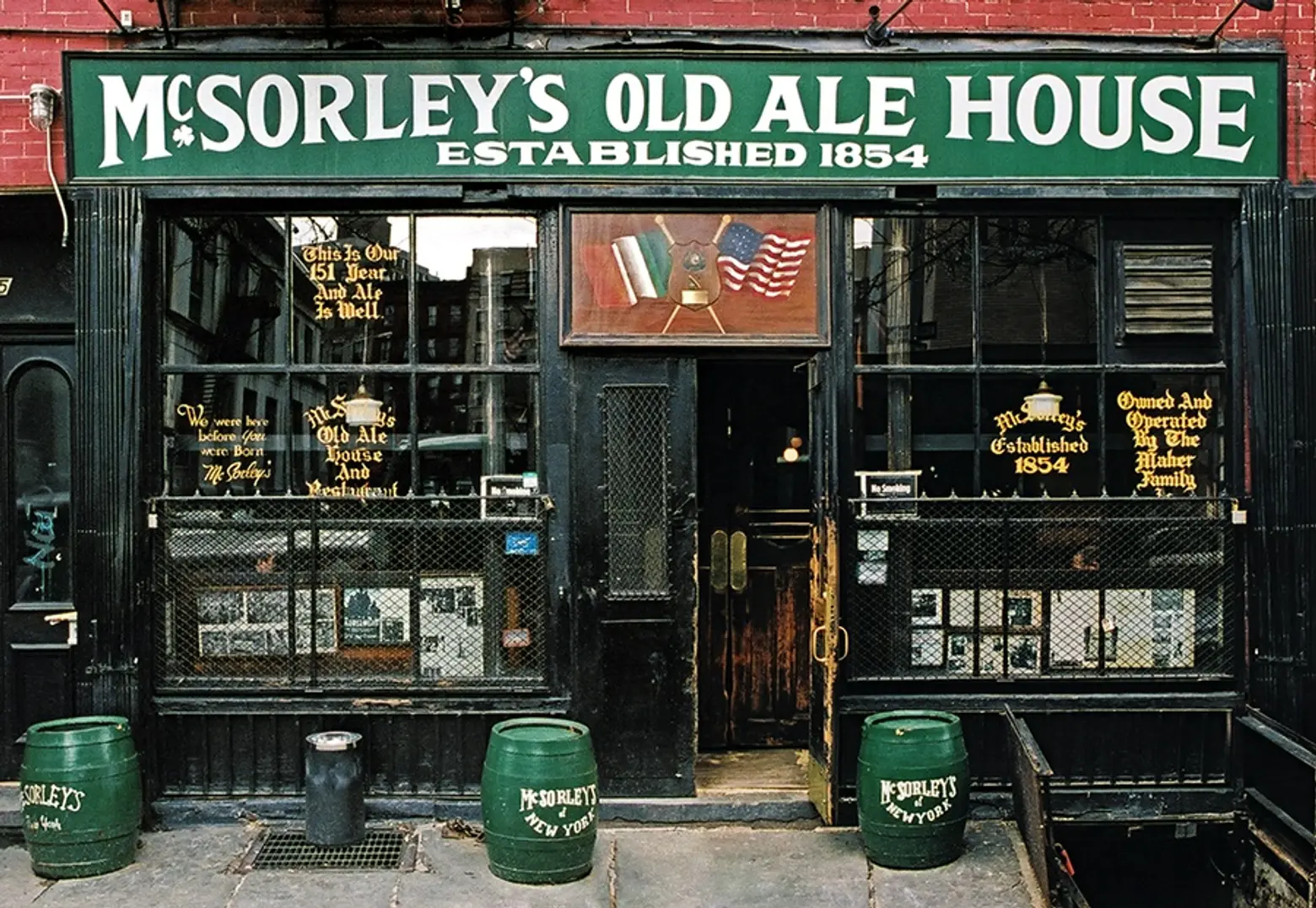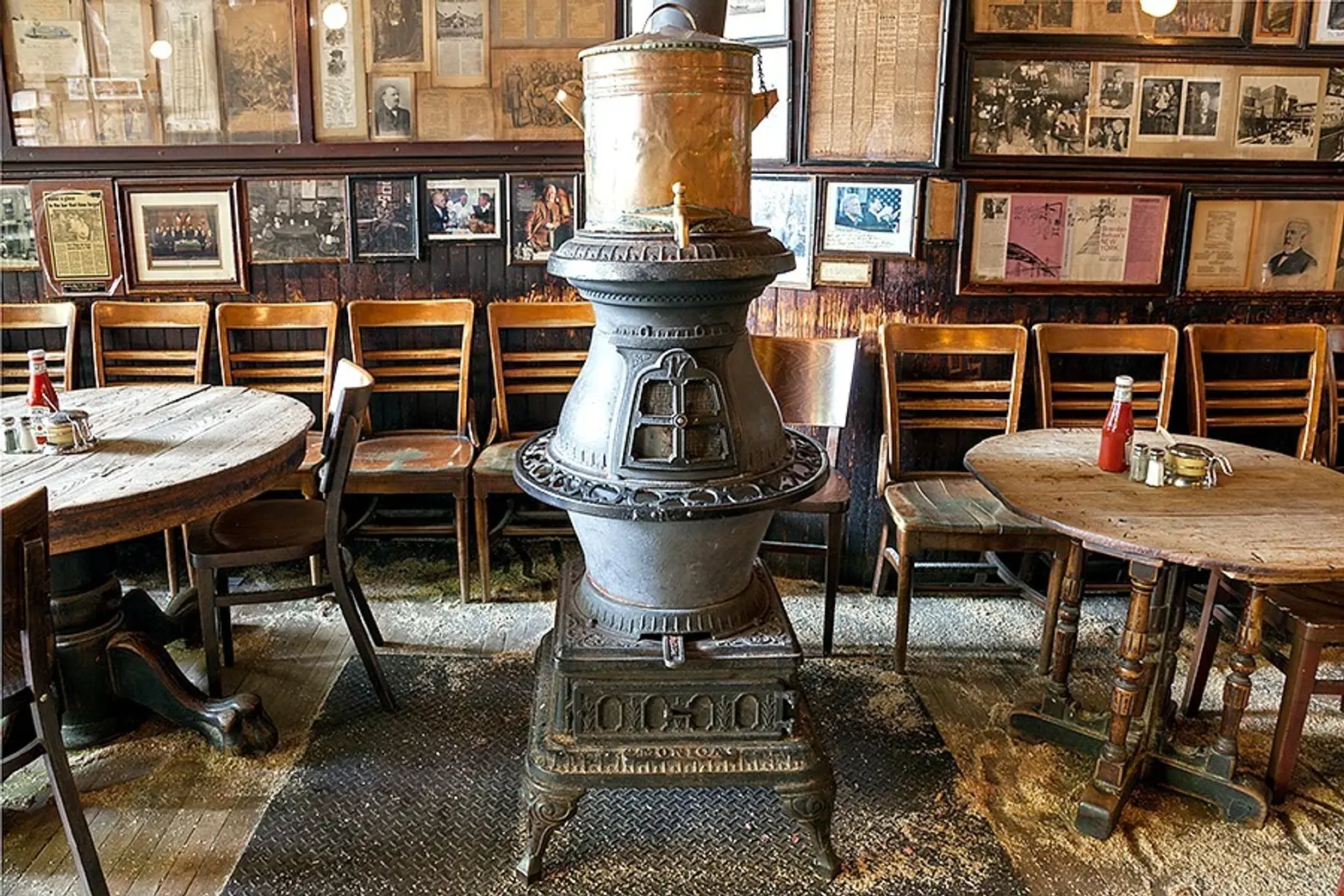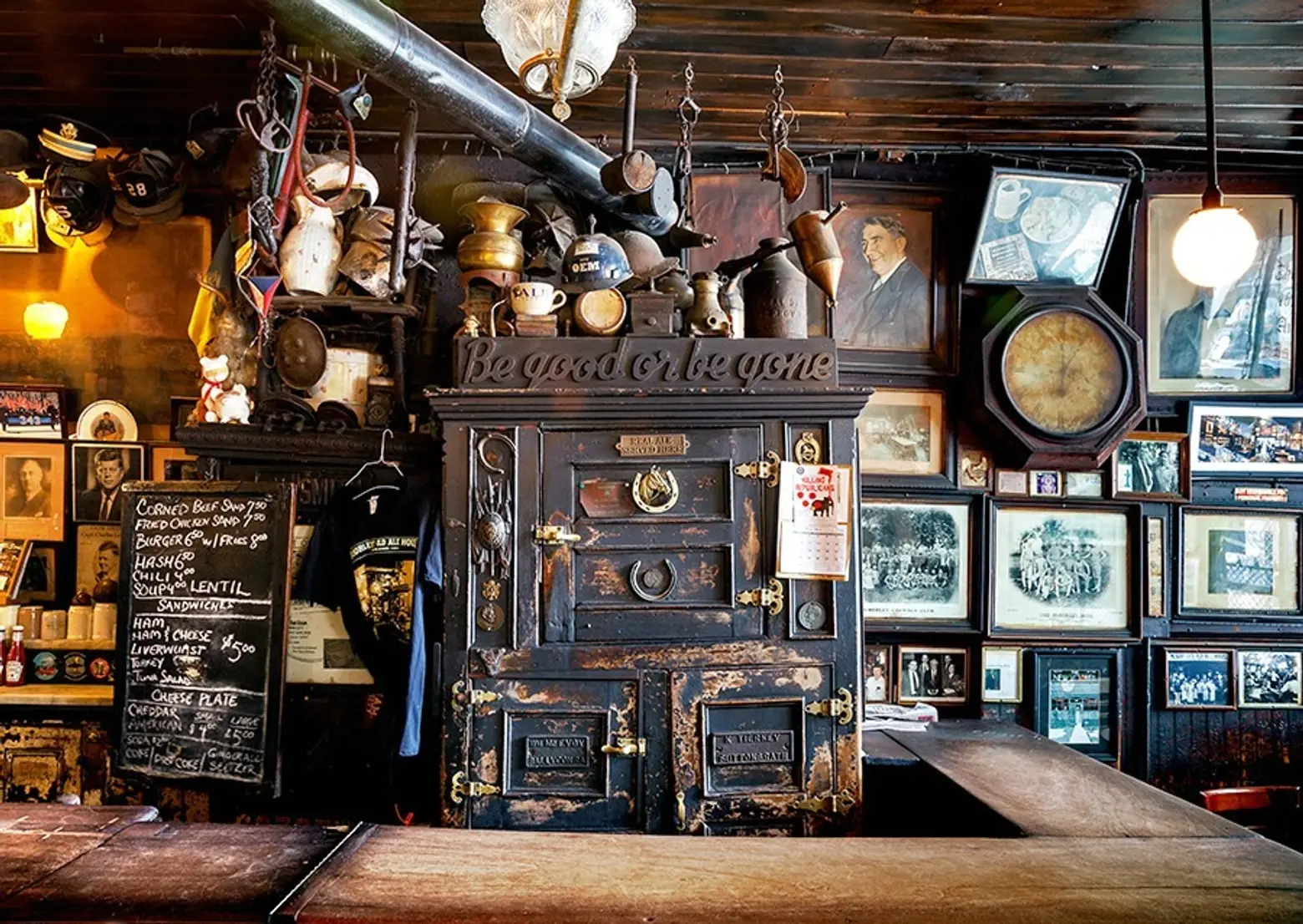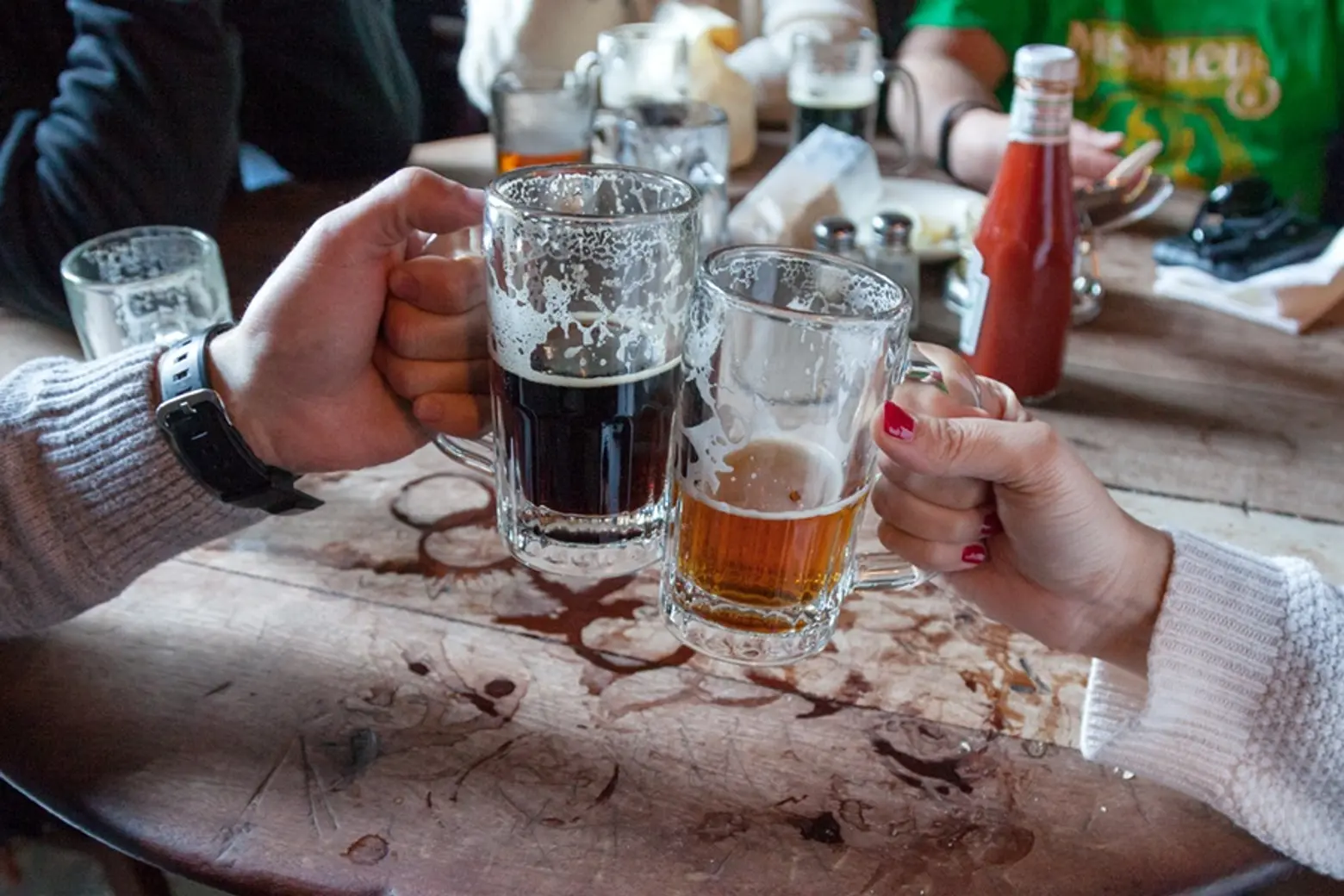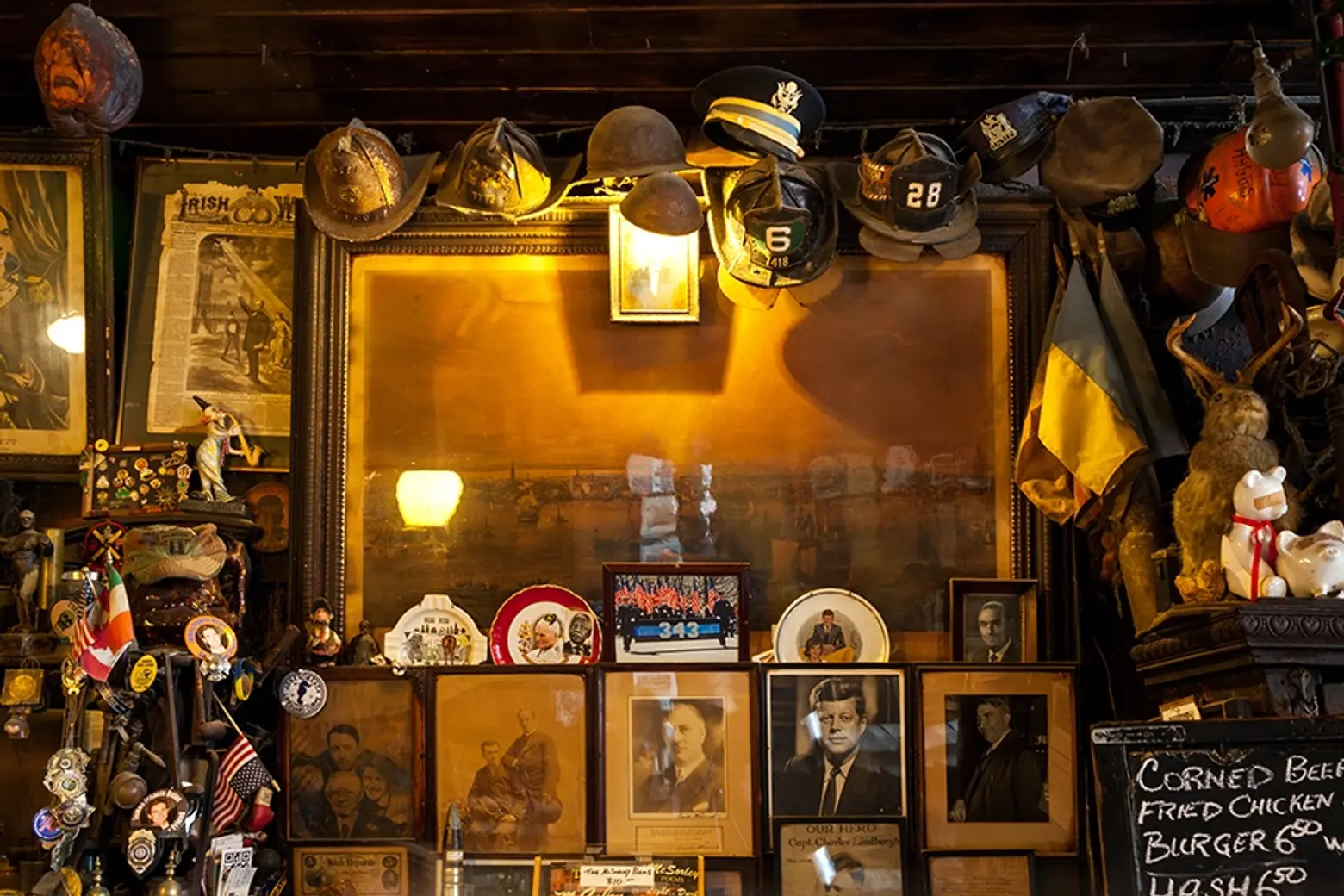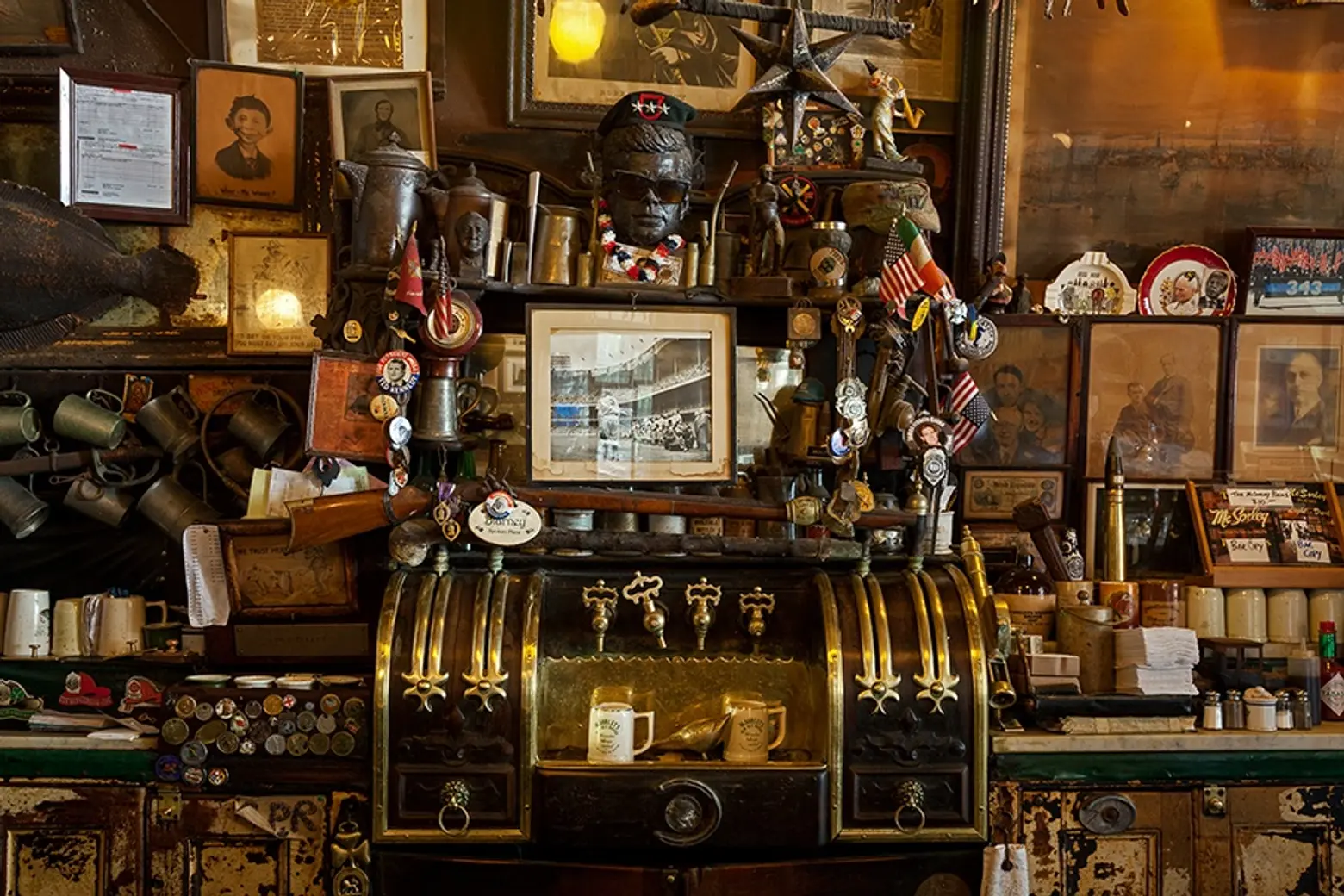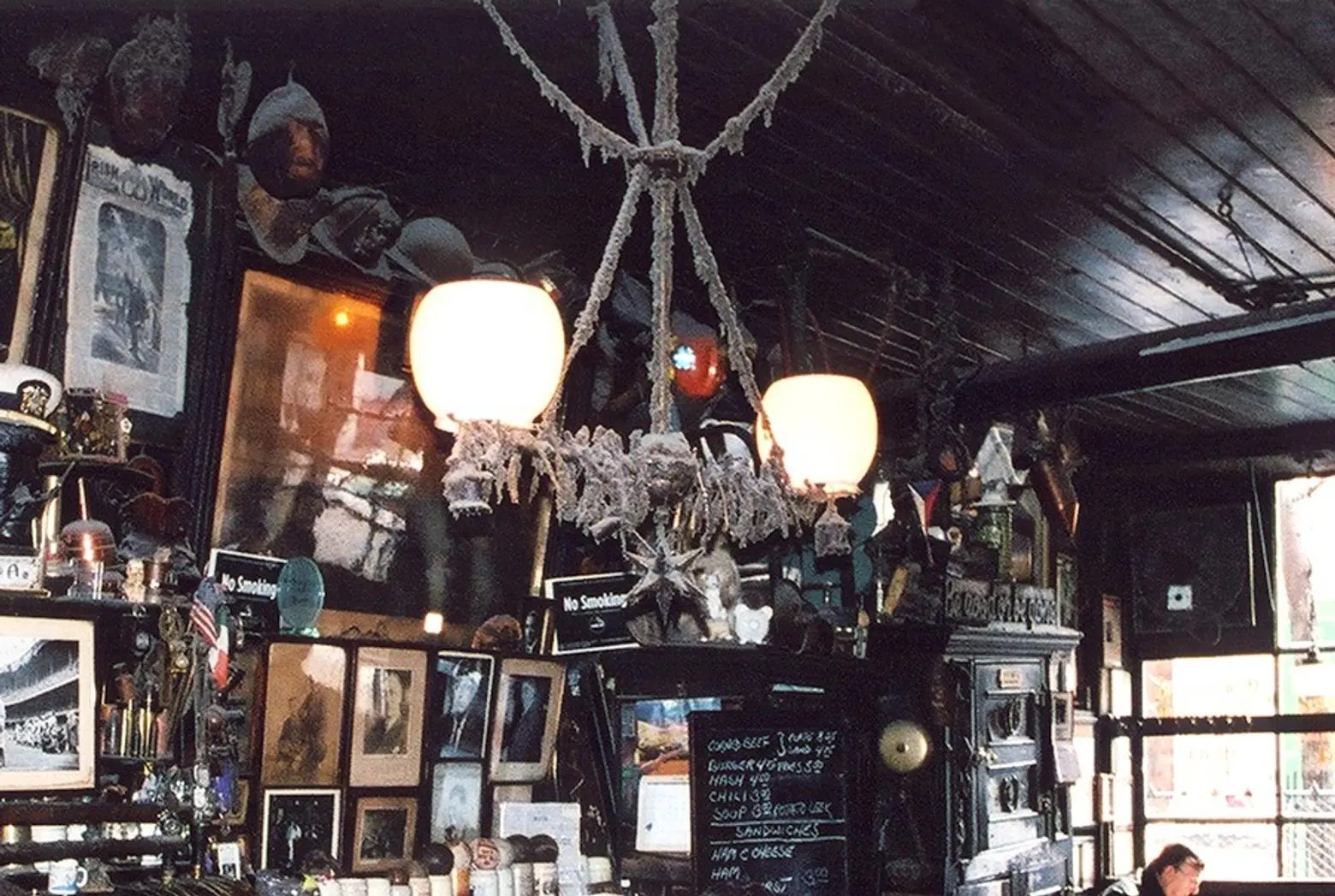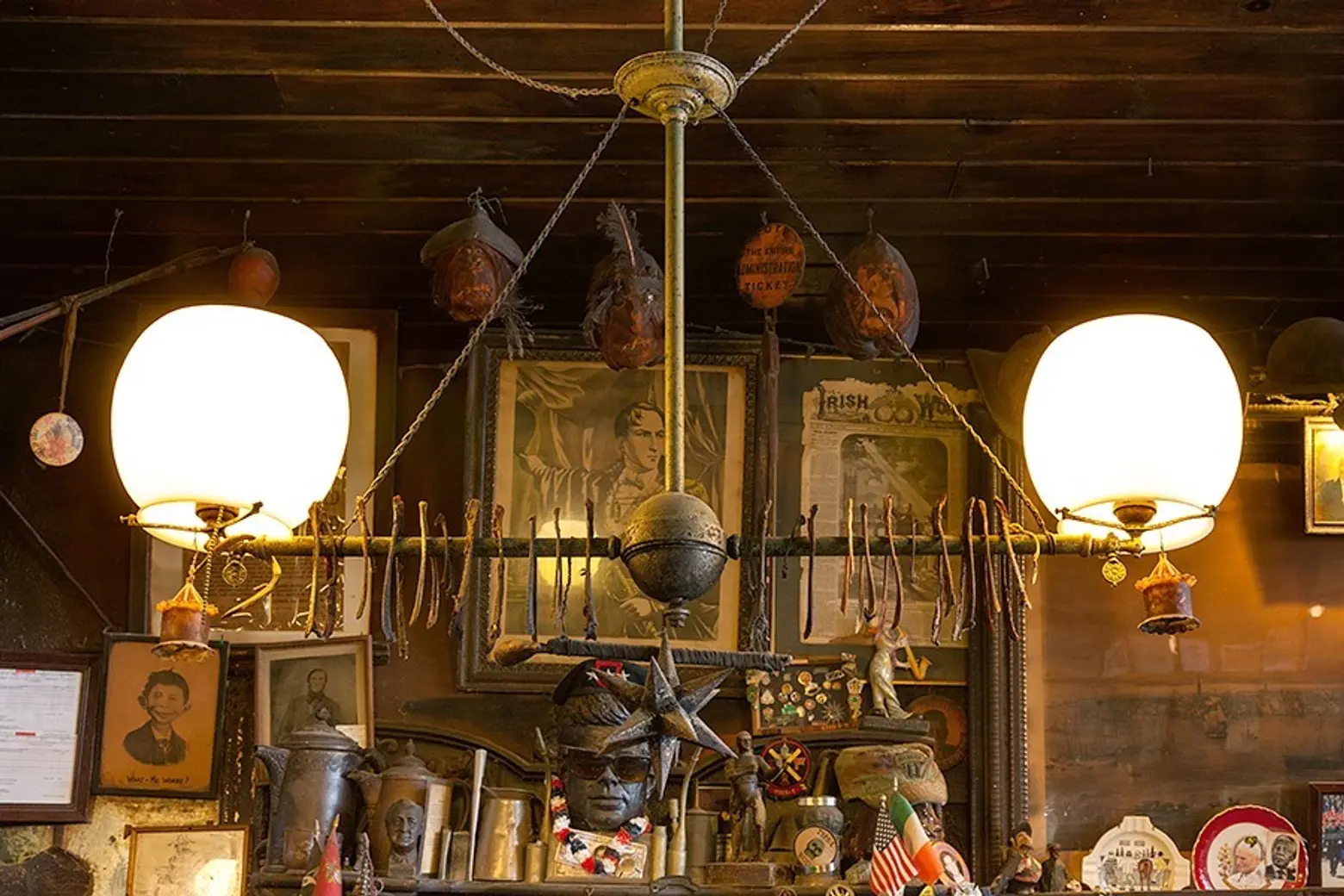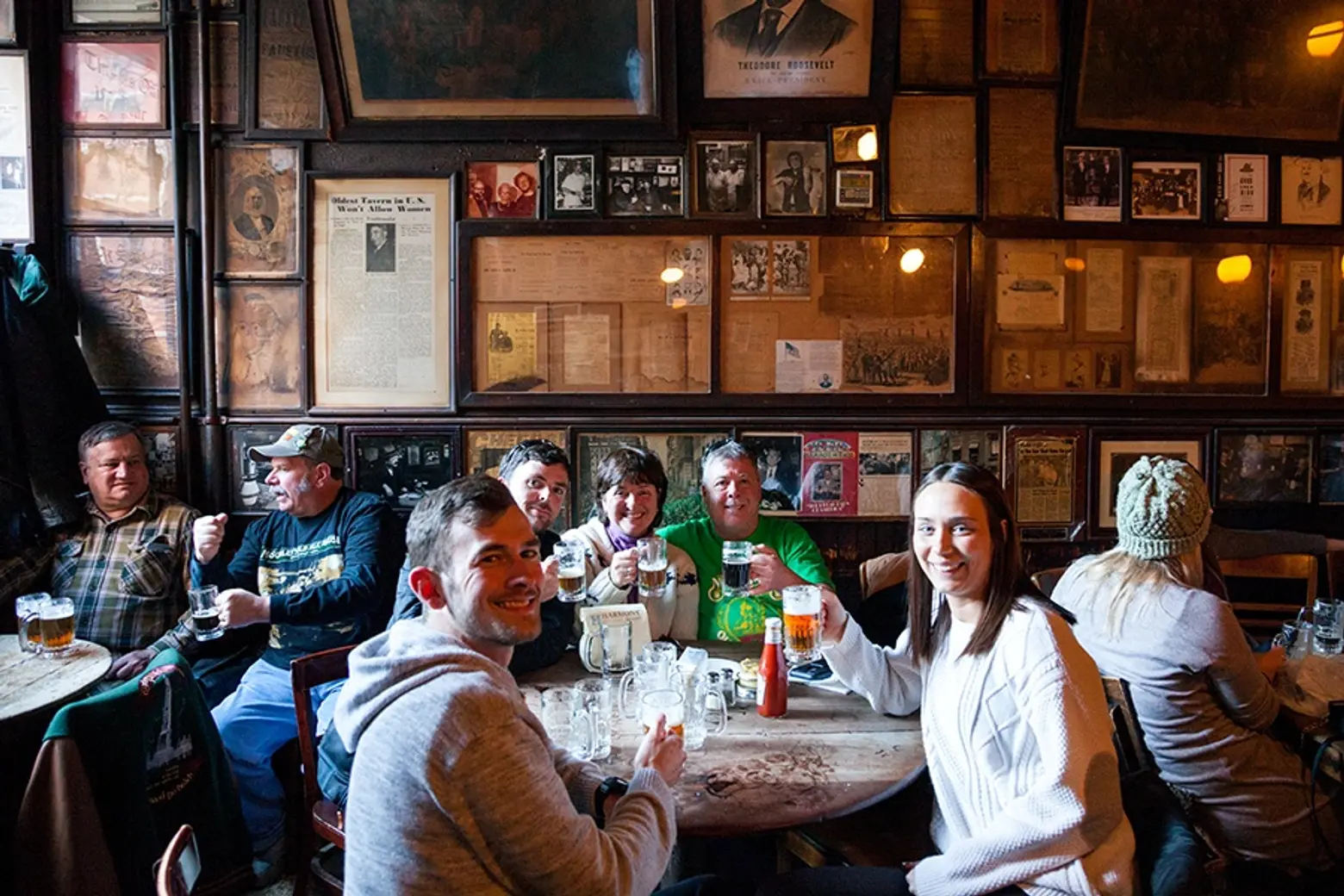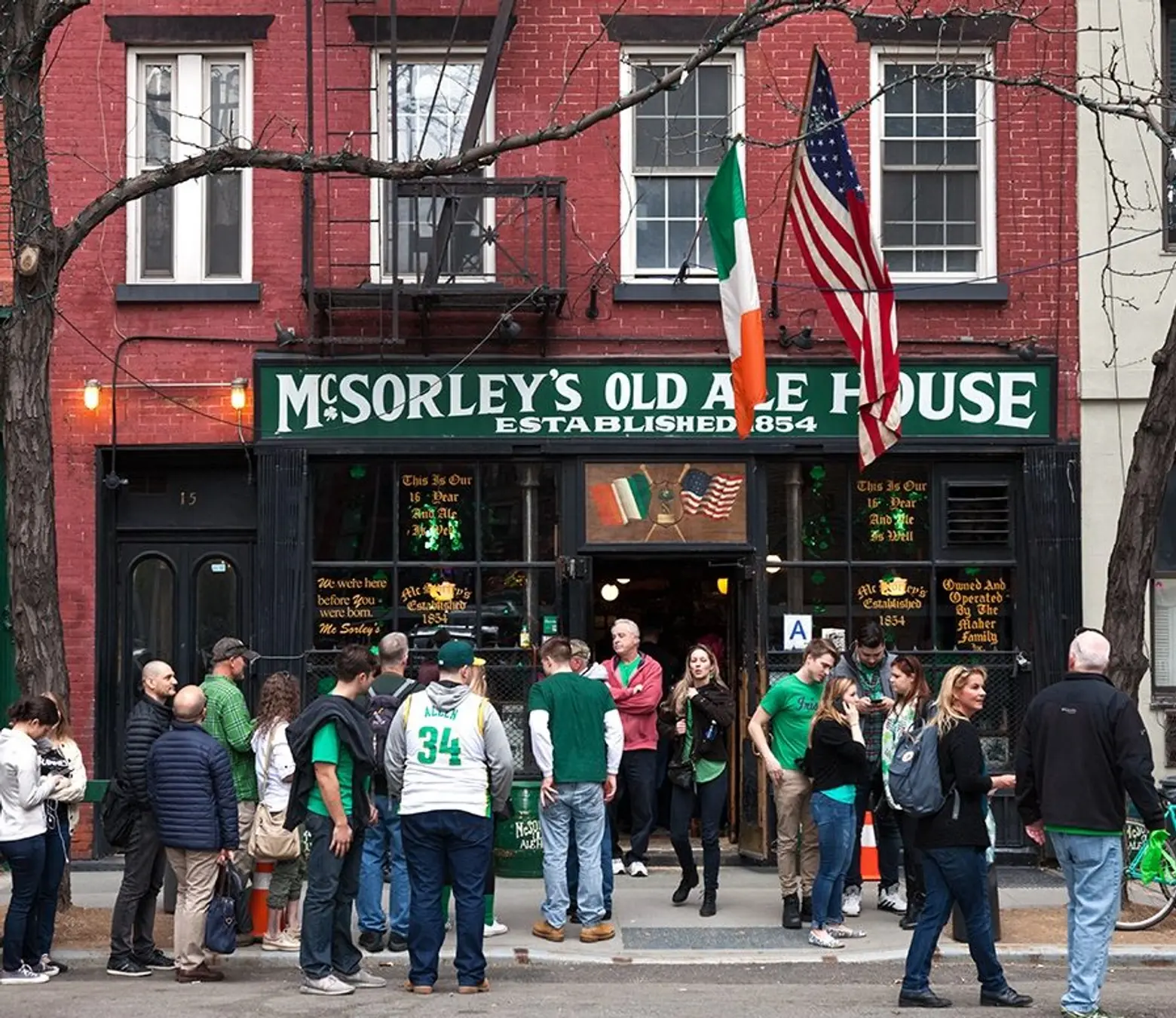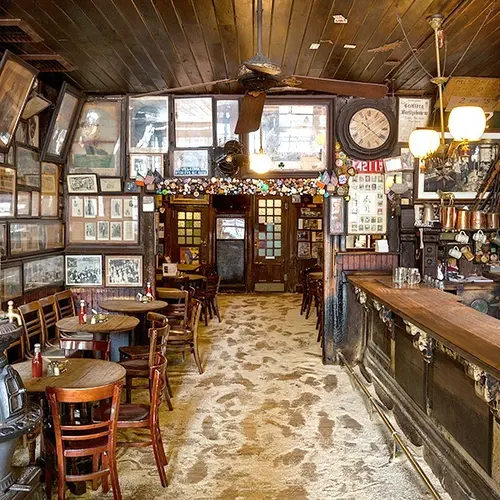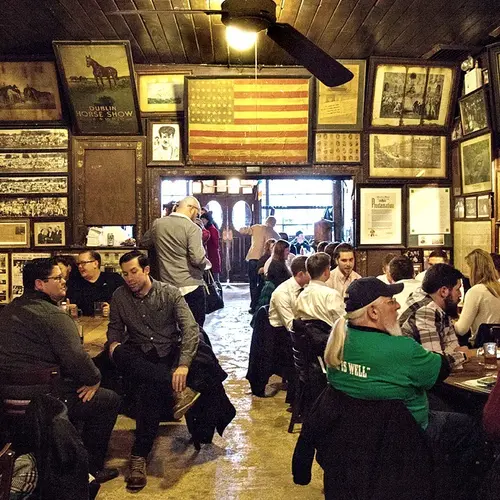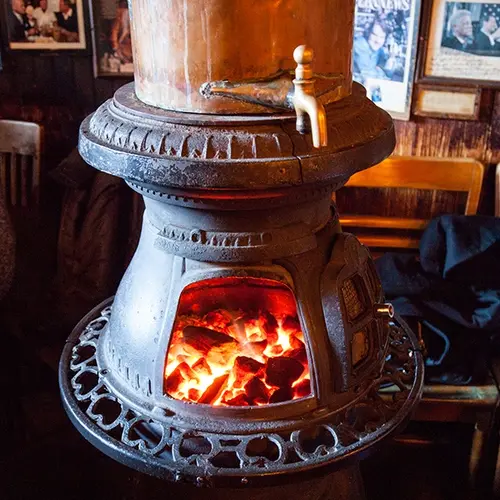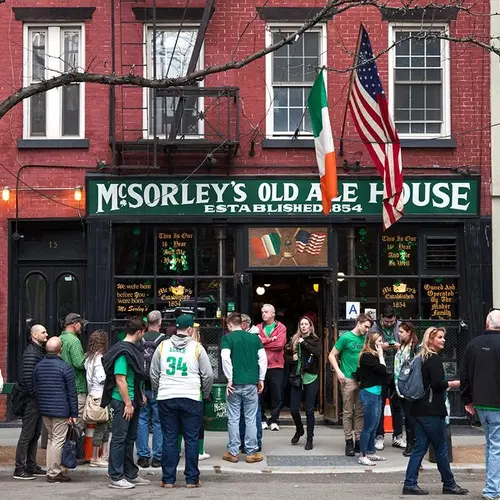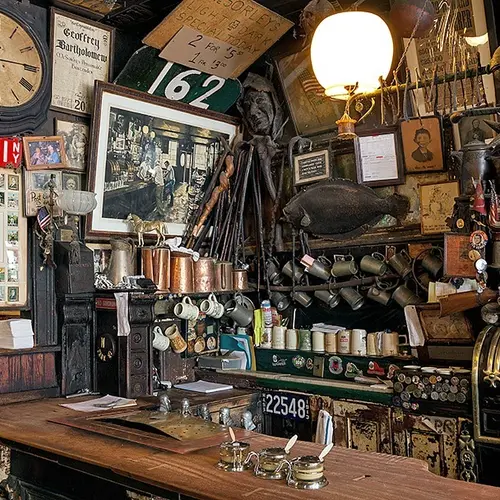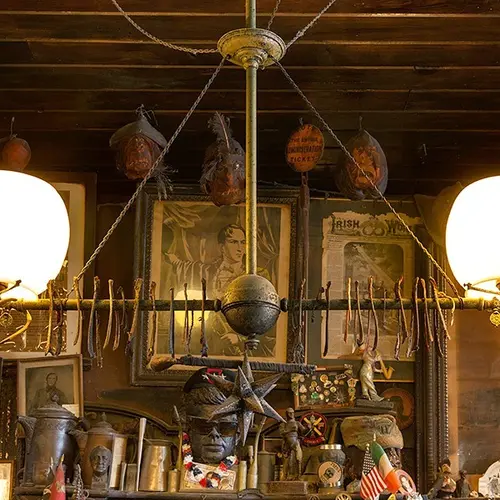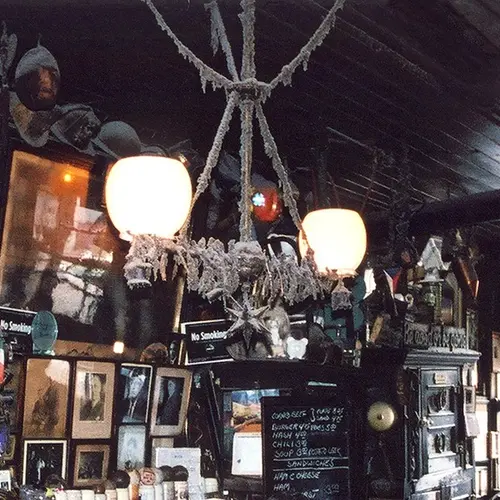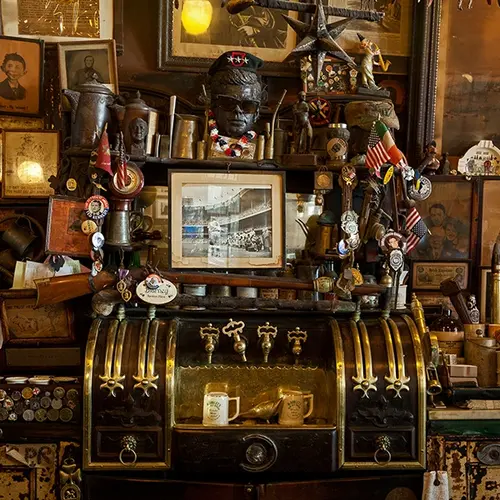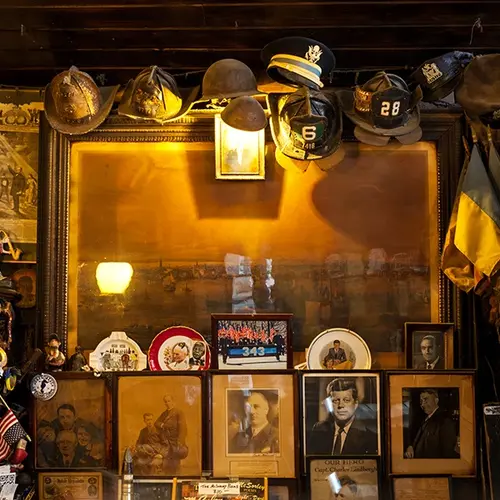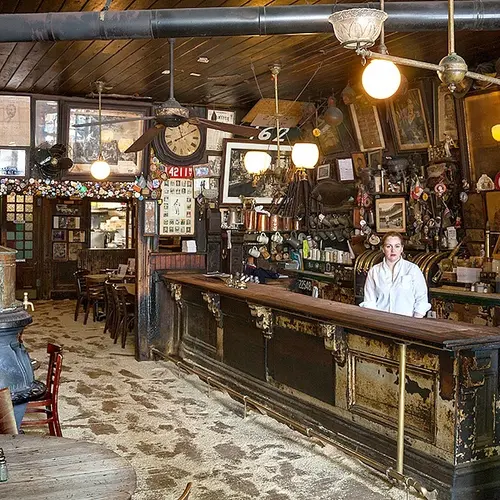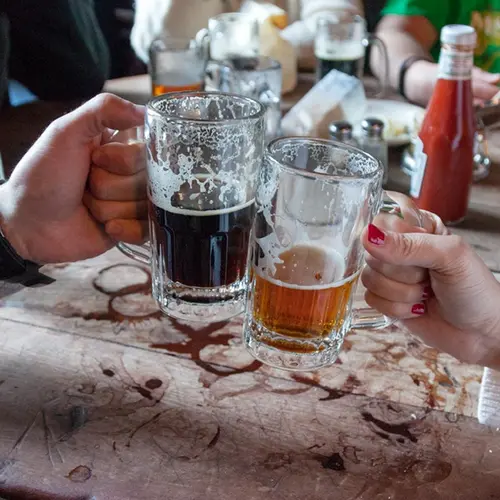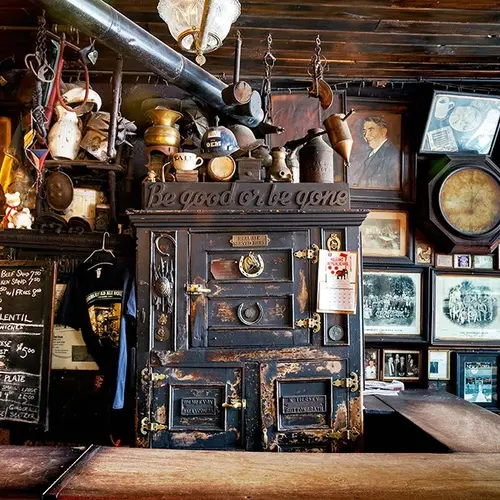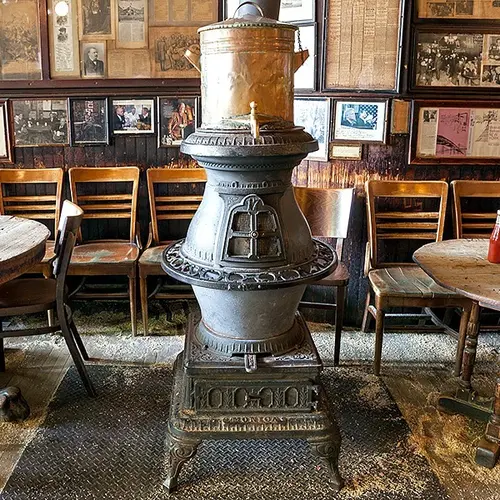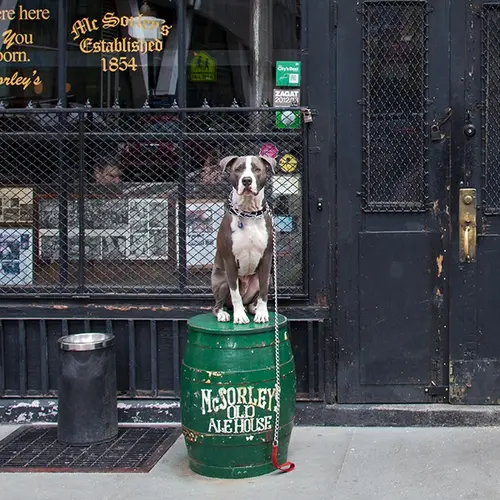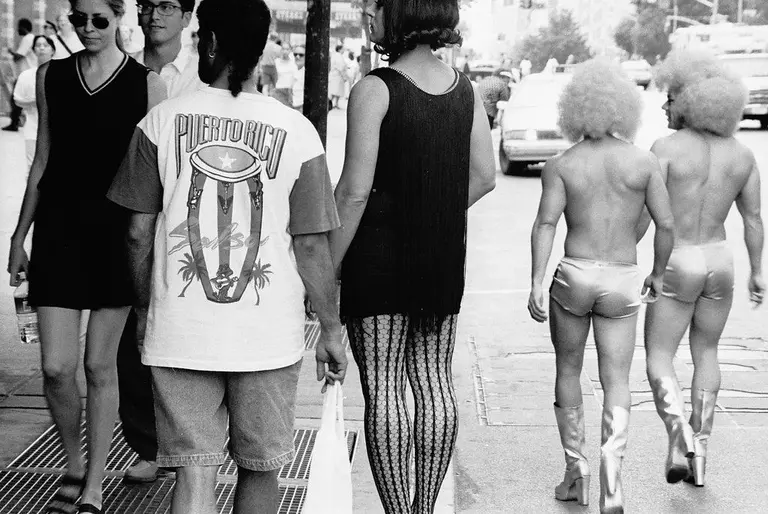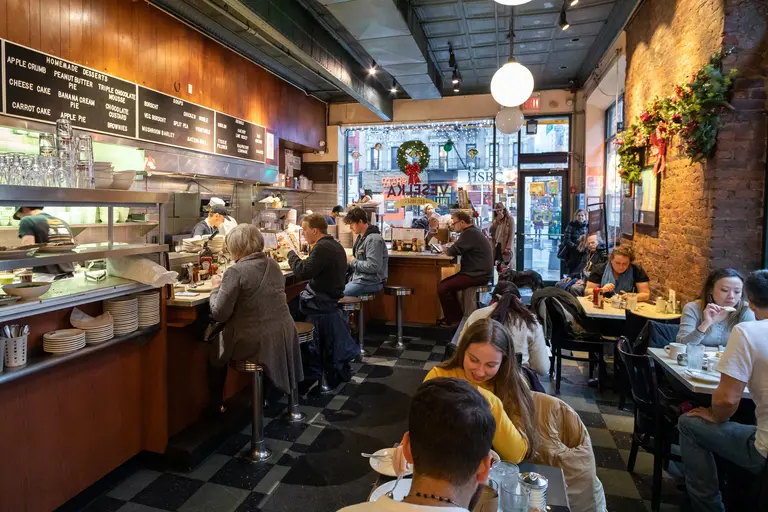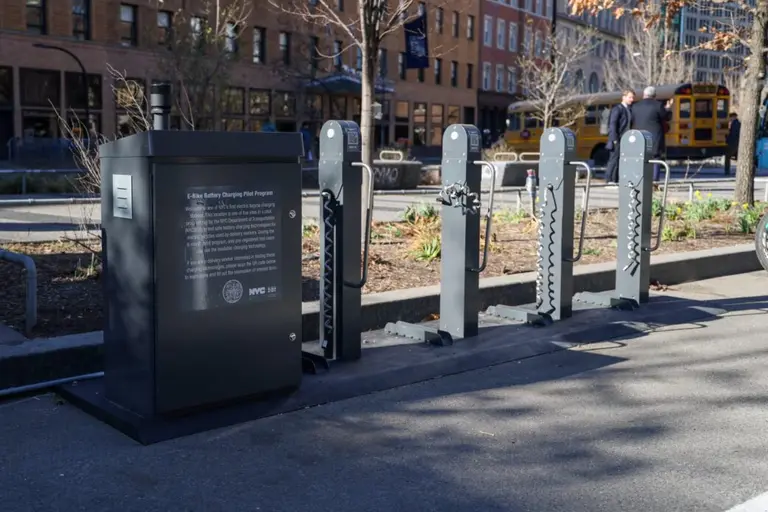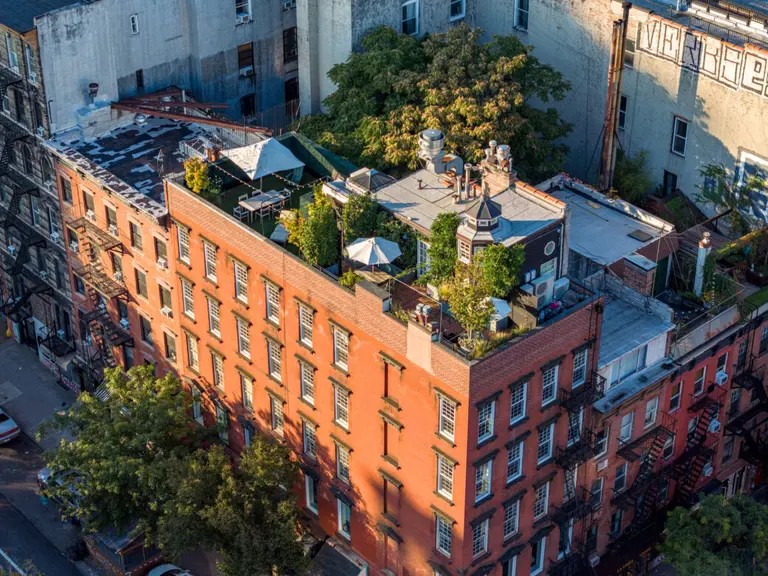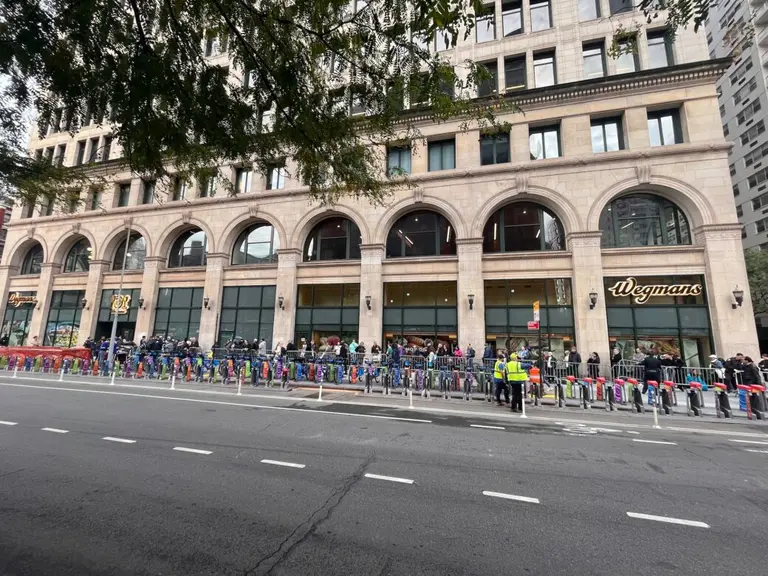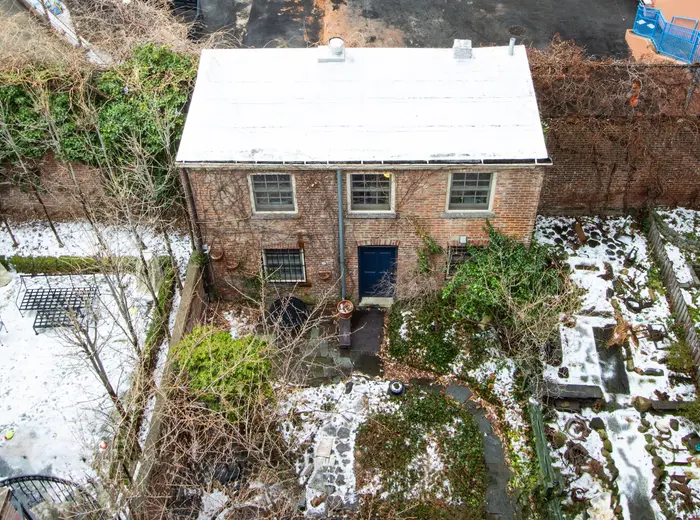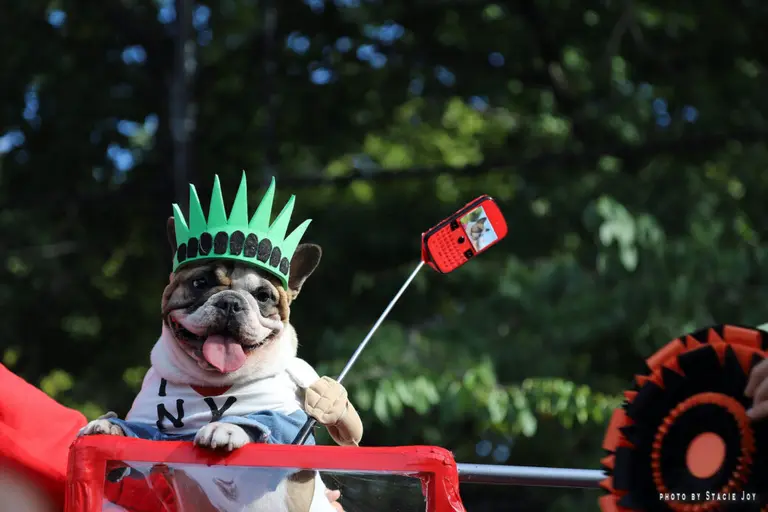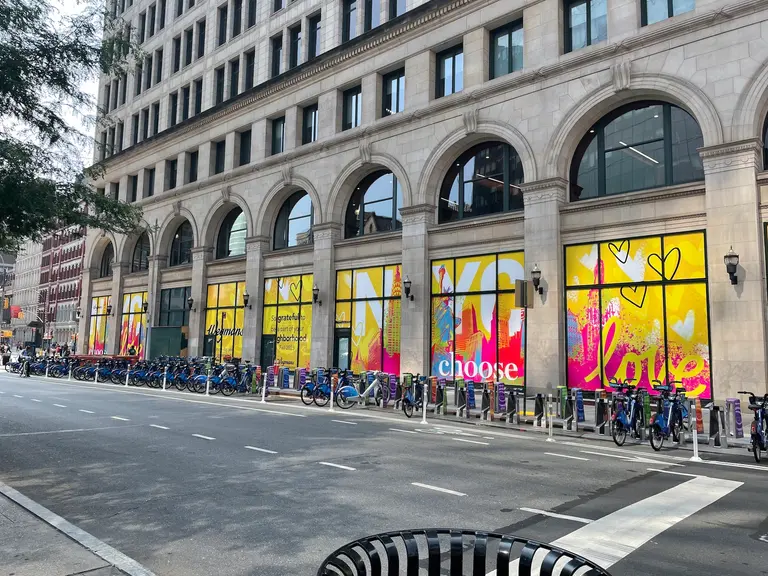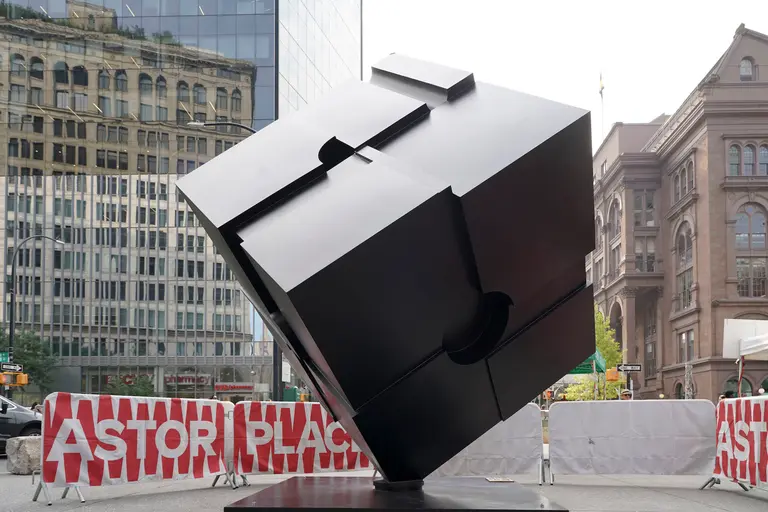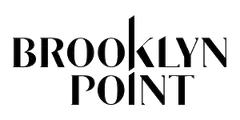The Urban Lens: Inside McSorley’s Old Ale House, NYC’s oldest bar
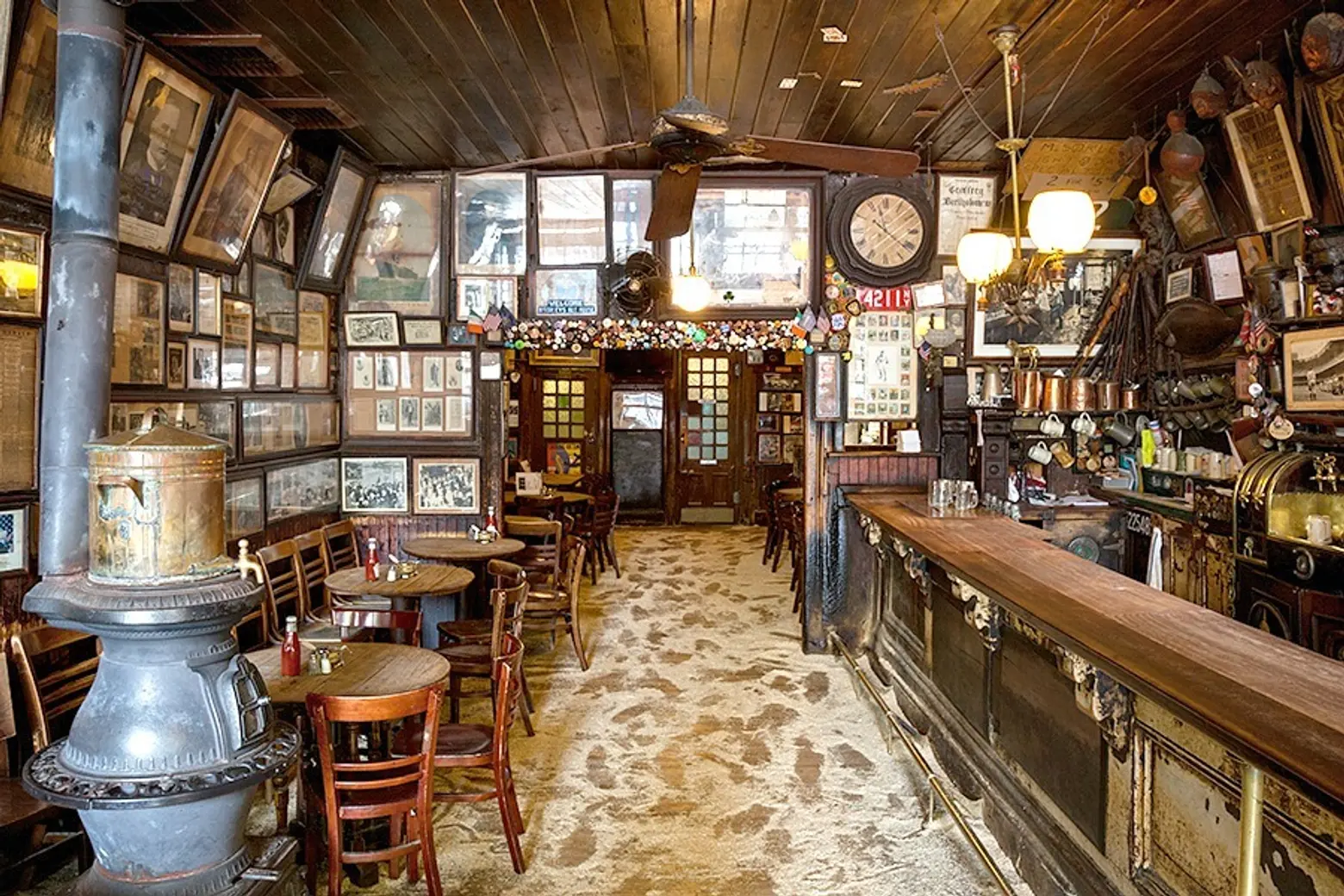
6sqft’s ongoing series The Urban Lens invites photographers to share work exploring a theme or a place within New York City. In this installment, award-winning photographers James and Karla Murray return for Saint Patrick’s Day with a look inside McSorley’s Old Ale House. Are you a photographer who’d like to see your work featured on The Urban Lens? Get in touch with us at [email protected].
With Saint Patrick’s Day just around the corner, McSorley’s Old Ale House–located in the East Village on East 7th Street by Cooper Square–is readying to welcome a crowd of beer-loving New Yorkers and out-of-towners alike. What sets this watering hole apart, aside from its limited “dark or light” menu, is that it’s the oldest bar in the city, a distinction proven after extensive research by the bar’s official historian Bill Wander. We recently paid the Irish tavern a visit to capture its historic details such as the original wooden bar and pot-bellied stove; iconic tchotchkes adorning the walls, which run the gamut from shackles worn by a prisoner of war from the Civil War to a horseshoe that legend says came from one of the horses that pulled Abraham Lincoln’s hearse; and the fun-loving crowd that can be seen there on a typical day. We also chatted with Teresa Maher, the very first woman to work behind the bar in 1994.
Originally, McSorley’s was an all-male establishment known by its slogan, “good ale, raw onions, and no ladies.” Female customers were admitted to most bars by about 1960, but McSorley’s was the last bar in New York City to admit only men. Despite pressure from the women’s movement, it fought to maintain its exclusivity, which was a common practice established long before Prohibition. The women presented their case with a lawsuit in 1970, Seidenberg vs. McSorley, that ultimately resulted in “McSorley’s law,” prohibiting sex discrimination in bars, hotels, restaurants, airplanes, golf clubs, and other public accommodations. Because the law stated that establishments only needed to provide “sanitary facilities” for their employees, McSorley’s only had one bathroom until 1986, when a women’s restroom was finally installed.
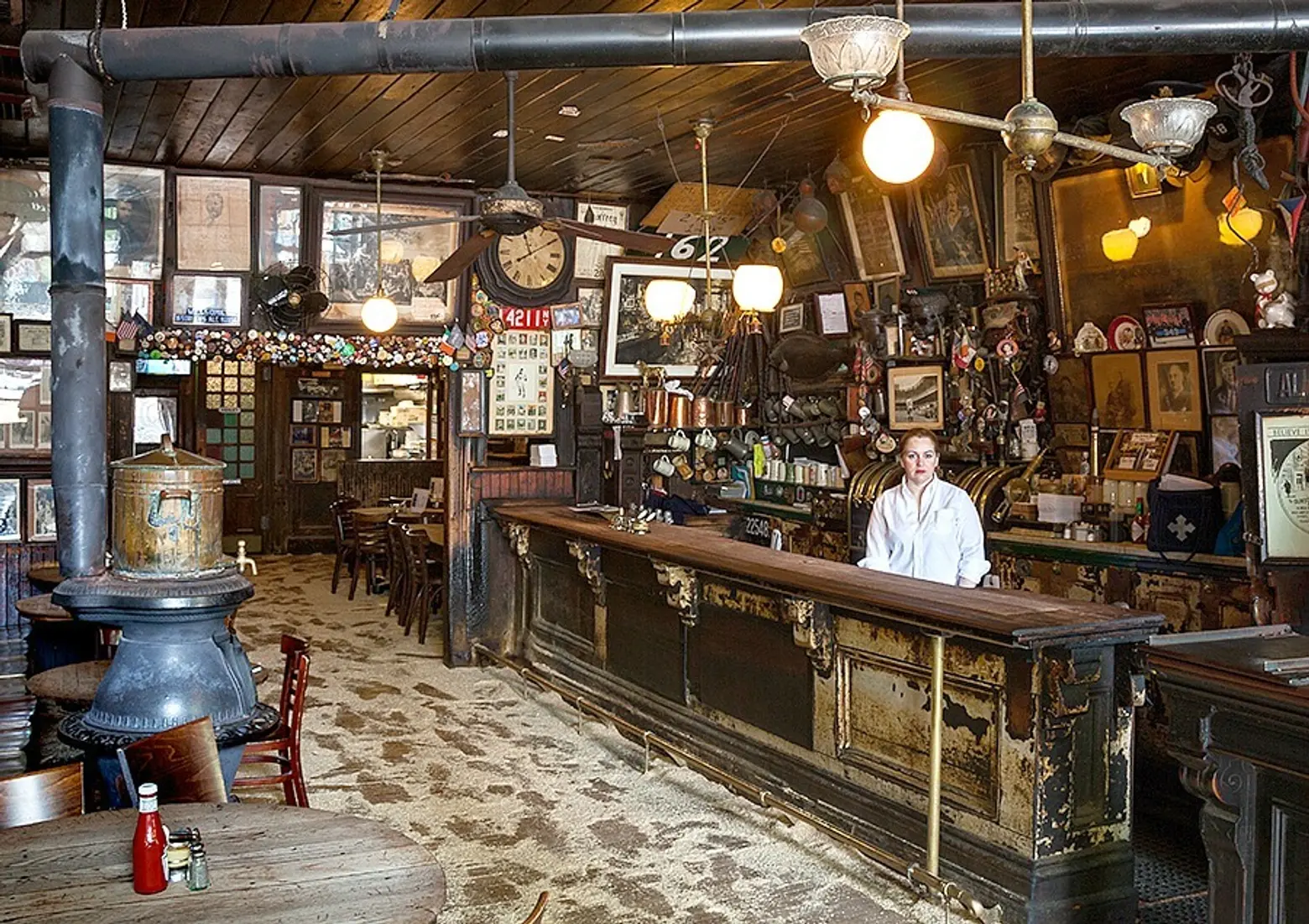
McSorley’s still has its original bar taps, wooden bar, and the pot-bellied stove from when it opened in 1854.
McSorley’s golden rule is “Be Good or Be Gone.”
It serves just two kinds of ale, McSorley’s own light and dark. When you order one beer, you actually will be served two half-pint-sized mugs.
Matthew Maher, the former bartender/manager, has owned McSorley’s since 1977. The Maher family is just the third family to own the bar since it opened and in a strange twist of fate, his daughter Teresa became the very first woman to work behind the bar in 1994.
We spoke with Teresa (seen in the lead image) who explained to us that if her father hadn’t purchased the entire building as well as the business, they “probably wouldn’t be here anymore.” She also spoke about some of the hundreds of items that line the walls and shelves of the bar: “Some of the artifacts decorating the bar would probably just disintegrate if they were taken out of here. That is just how old and fragile they are. None of the items have been removed since 1910.”
“Some things customers left at the bar just because they wanted to add to our collection. We have a good number of old fireman hats and the orange one is from a fireman who was at the World Trade Center on 9/11.”
“The three-star general’s hat has been here for about six years. He came in and said to us, if I leave you my hat, will you promise never to take it off Kennedy’s head? And we of course agreed. He still comes in here from time to time to check to see if it is still there.”
Teresa explained, “Many of the turkey wishbones hanging from the old gas lamp over the bar were put up during World War I and were hung by doughboys as wishful symbols of a safe return from the war. When they returned, they would remove the wishbone they had placed there. The bones left dangling represent those who never came back.” The photo of the dusty wishbones was taken in 2004.
“We reluctantly had to clean the years of dust off them about six years ago after the city started doing the letter grading of bars and restaurants and suggested that we remove them as the dust could potentially fall in drinks. My father and I wish we hadn’t had to disturb them but it was either clean the dust or take them down, so we carefully cleaned them.”
+++
RELATED:
- Interview: McSorley’s Historian Bill Wander Fills Us In on the Secrets of NYC’s Oldest Bar
- The Urban Lens: Visiting Gramercy’s Pete’s Tavern, where O. Henry penned ‘The Gift of the Magi’
- The Urban Lens: Inside the Village East Cinema, one of NY’s last surviving ‘Yiddish Rialto’ theaters
All images © James and Karla Murray, photos are not to be reproduced without written permission

James and Karla Murray are husband-and-wife New York-based photographers and authors. Their critically acclaimed books include Store Front: The Disappearing Face of New York, New York Nights, Store Front II- A History Preserved and Broken Windows-Graffiti NYC. The authors’ landmark 2008 book, Store Front, was cited in Bookforum’s Dec/Jan 2015 issue as one of the “Exemplary art books from the past two decades” and heralded as “One of the periods most successful New York books.” New York Nights was the winner of the prestigious New York Society Library’s 2012 New York City Book Award. James and Karla Murray’s work has been exhibited widely in major institutions and galleries, including solo exhibitions at the Brooklyn Historical Society, Clic Gallery in New York City, and Fotogalerie Im Blauen Haus in Munich, Germany, and group shows at the New-York Historical Society and the Museum of Neon Art in Glendale, CA. Their photographs are included in the permanent collections of major institutions, including the Smithsonian Center for Folklife and Cultural Heritage, the New York Public Library, and NYU Langone Medical Center. James and Karla were awarded the 2015 Regina Kellerman Award by the Greenwich Village Society for Historic Preservation (GVSHP) in recognition of their significant contribution to the quality of life in Greenwich Village, the East Village, and NoHo. James and Karla live in the East Village of Manhattan with their dog Hudson.
